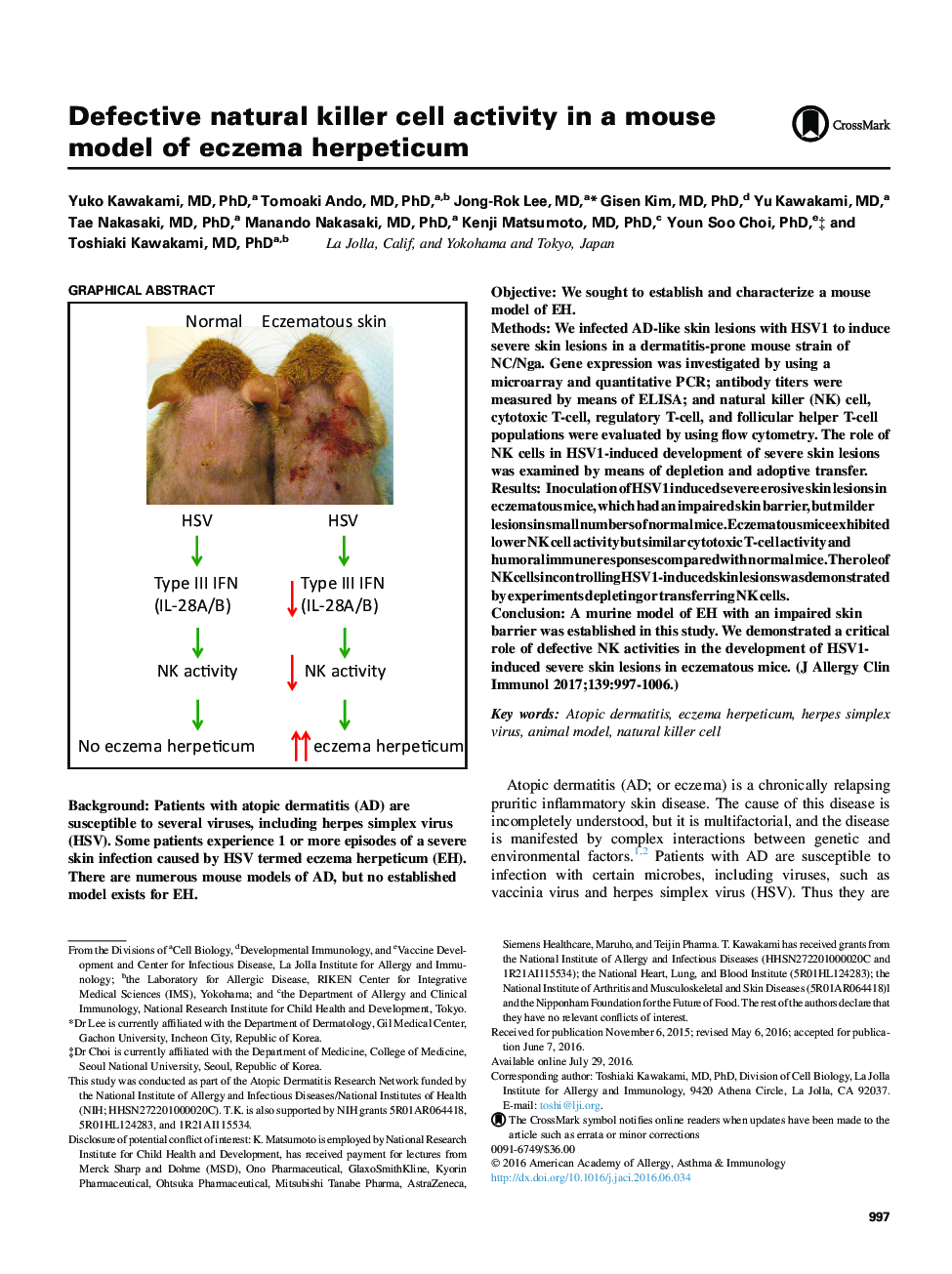| Article ID | Journal | Published Year | Pages | File Type |
|---|---|---|---|---|
| 5646854 | Journal of Allergy and Clinical Immunology | 2017 | 20 Pages |
BackgroundPatients with atopic dermatitis (AD) are susceptible to several viruses, including herpes simplex virus (HSV). Some patients experience 1 or more episodes of a severe skin infection caused by HSV termed eczema herpeticum (EH). There are numerous mouse models of AD, but no established model exists for EH.ObjectiveWe sought to establish and characterize a mouse model of EH.MethodsWe infected AD-like skin lesions with HSV1 to induce severe skin lesions in a dermatitis-prone mouse strain of NC/Nga. Gene expression was investigated by using a microarray and quantitative PCR; antibody titers were measured by means of ELISA; and natural killer (NK) cell, cytotoxic T-cell, regulatory T-cell, and follicular helper T-cell populations were evaluated by using flow cytometry. The role of NK cells in HSV1-induced development of severe skin lesions was examined by means of depletion and adoptive transfer.ResultsInoculation of HSV1 induced severe erosive skin lesions in eczematous mice, which had an impaired skin barrier, but milder lesions in small numbers of normal mice. Eczematous mice exhibited lower NK cell activity but similar cytotoxic T-cell activity and humoral immune responses compared with normal mice. The role of NK cells in controlling HSV1-induced skin lesions was demonstrated by experiments depleting or transferring NK cells.ConclusionA murine model of EH with an impaired skin barrier was established in this study. We demonstrated a critical role of defective NK activities in the development of HSV1-induced severe skin lesions in eczematous mice.
Graphical abstractDownload high-res image (171KB)Download full-size image
